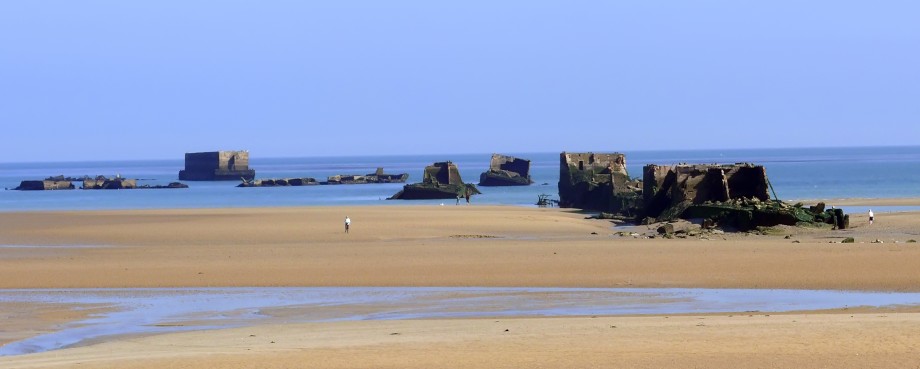Mont-Saint-Michel
Appearing suddenly offshore as if rising 400 feet up out of nothing, this medieval fortress is one of the most emblematic sites of Normandy. Since medival times it has been a major stop for pilgrims and this is what the wealth of the town was initially built on. However situated as it is on the border between Normandy and Brittany, in an easily defended location, the Mont was later to acquire strategic importance and became the subject of disputes between the two regions and later between France and England.
The site is very impressive as the town is entirely surrounded by water at high tide but at low tide the water recedes nearly 11 miles and the difference in water levels is up to 46 feet (14 meters). Although a very striking place well worth visiting, today the Mont can become very crowded in the afternoons and it is strongly recommended to avoid this time in order to beat the crowds.
This small rocky island was originally known as Monte Tombe until 708AD when the Bishop of Avranches, Saint Aubert, saw an apparition of the archangel Michel. St Michel ordered the Bishop to built a monastery at the top of the rock but Saint Aubert repeatedly ignored this request until Saint Michel, using his finger, burned a hole in the Bishops forehead to convince him that his vision was indeed the call of God. This made St Aubert finally realise that his visions were real and he ordered the building the first monastery there. In 933 Mont Saint Michel was attached to the Duchy of Normandy and is mentioned in the Bayeux Tapestry as a small part of the story depicted takes place near the island.
During the Hundred Years’ war the English tried to capture the island but it was too well defended. Two wrought-iron cannons captured by the French defenders at the time can still be seen just inside the town gates. It went on to become one of the most important French centres of pilgrimage but during the French Revolution the monastery was plundered and then used as a prison, becoming very run-down. In the middle of the 19th century several important figures ‘ Victor Hugo among them- promoted the site for it’s architectural importance and in 1863 the prison was finally closed. In 1879 the Mont Saint Michel was added to the World Heritage List by UNESCO and since then it has been the subject of continuous restoration work.
If visiting you should be aware that even getting into the town from where the car park is located there are a lot of steps. Wheelchair access within the town itself is almost non existant and even the smallest mobility scooter will not get in or get you around the town. If you are heading up to visit the church at the summit, the only way up is to walk. This visit is recommended for fit people only.
More informations : Mont-Saint-Michel Tourist Office
